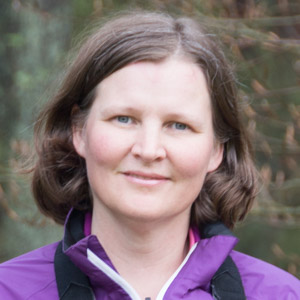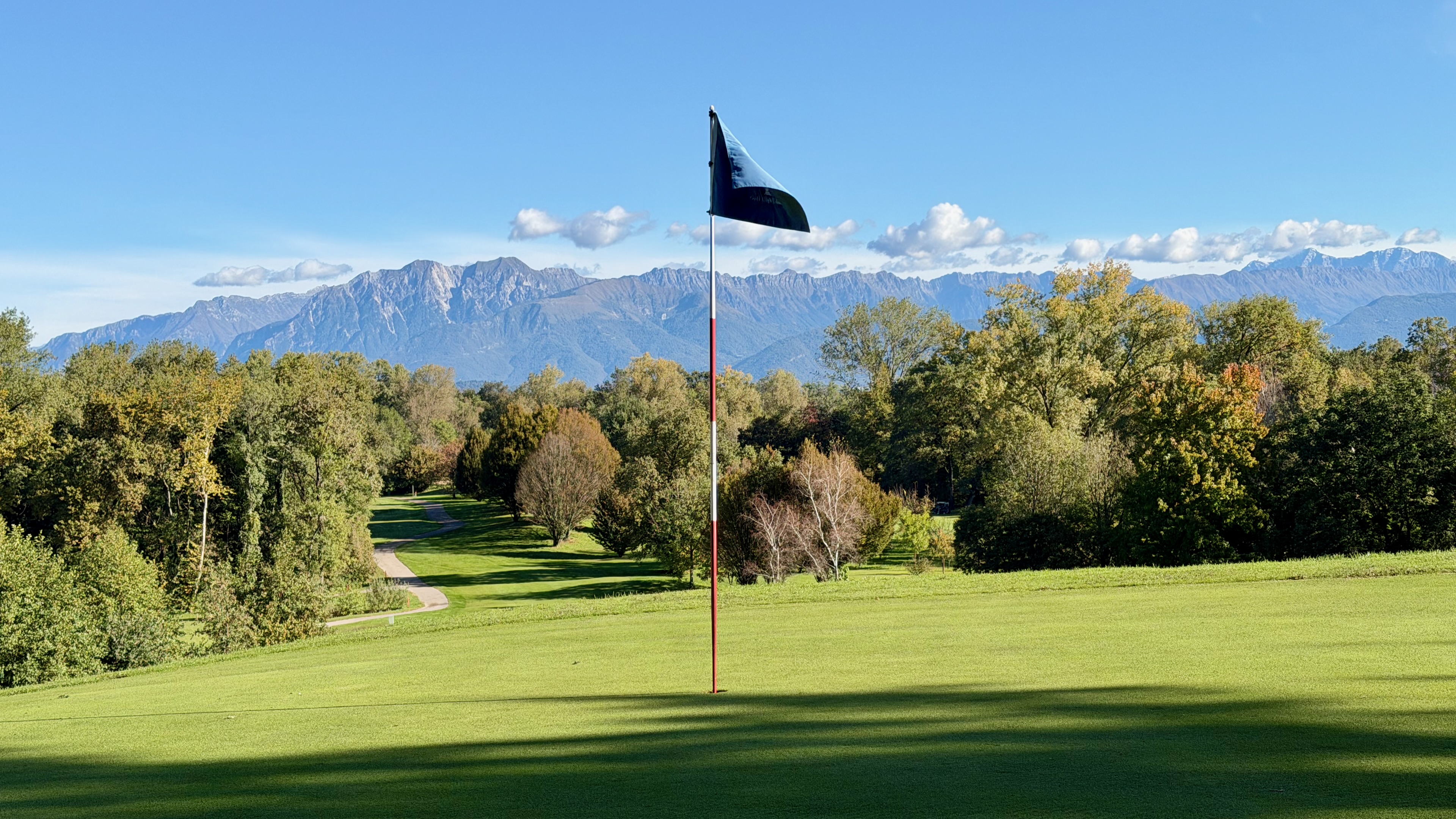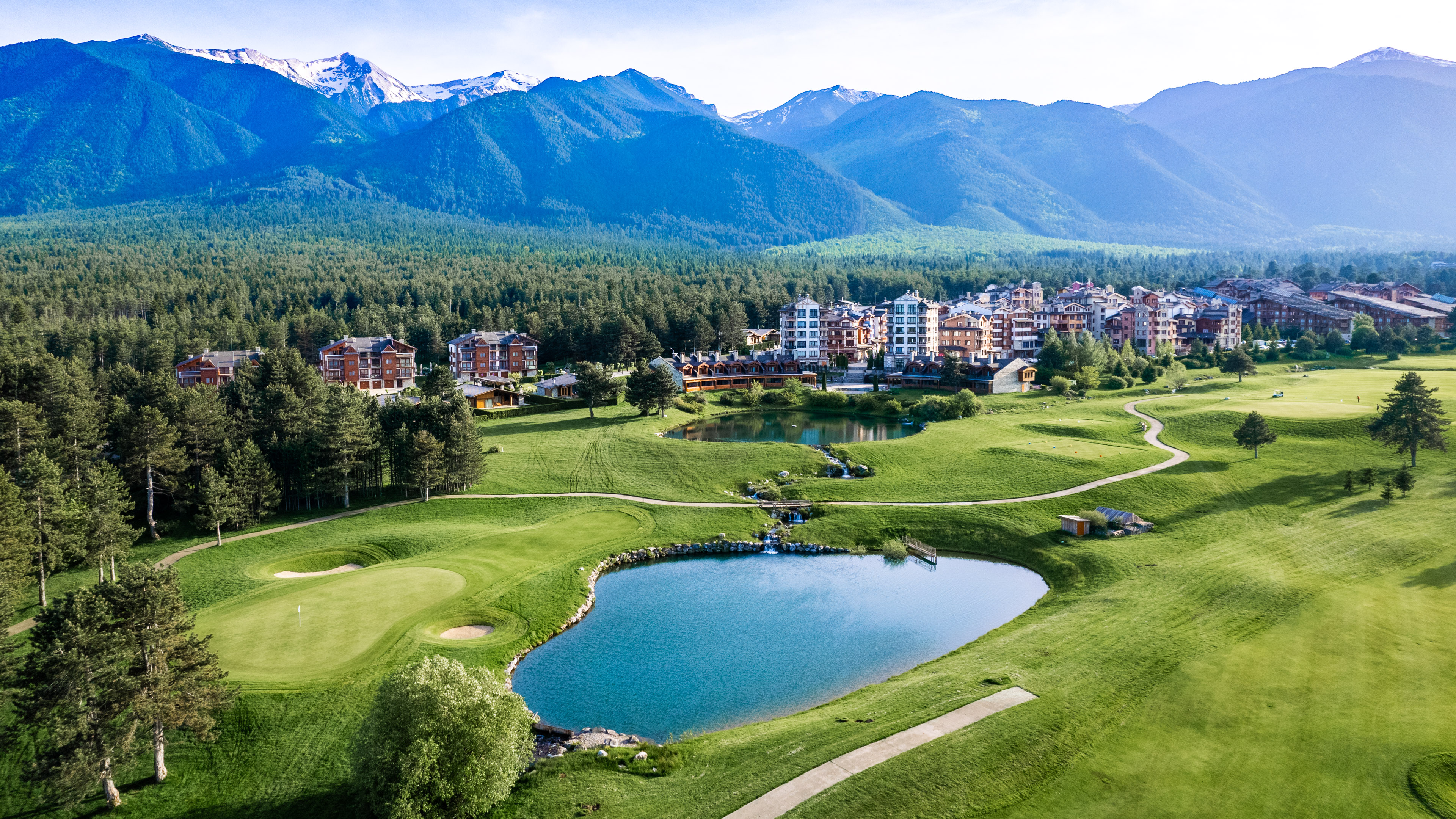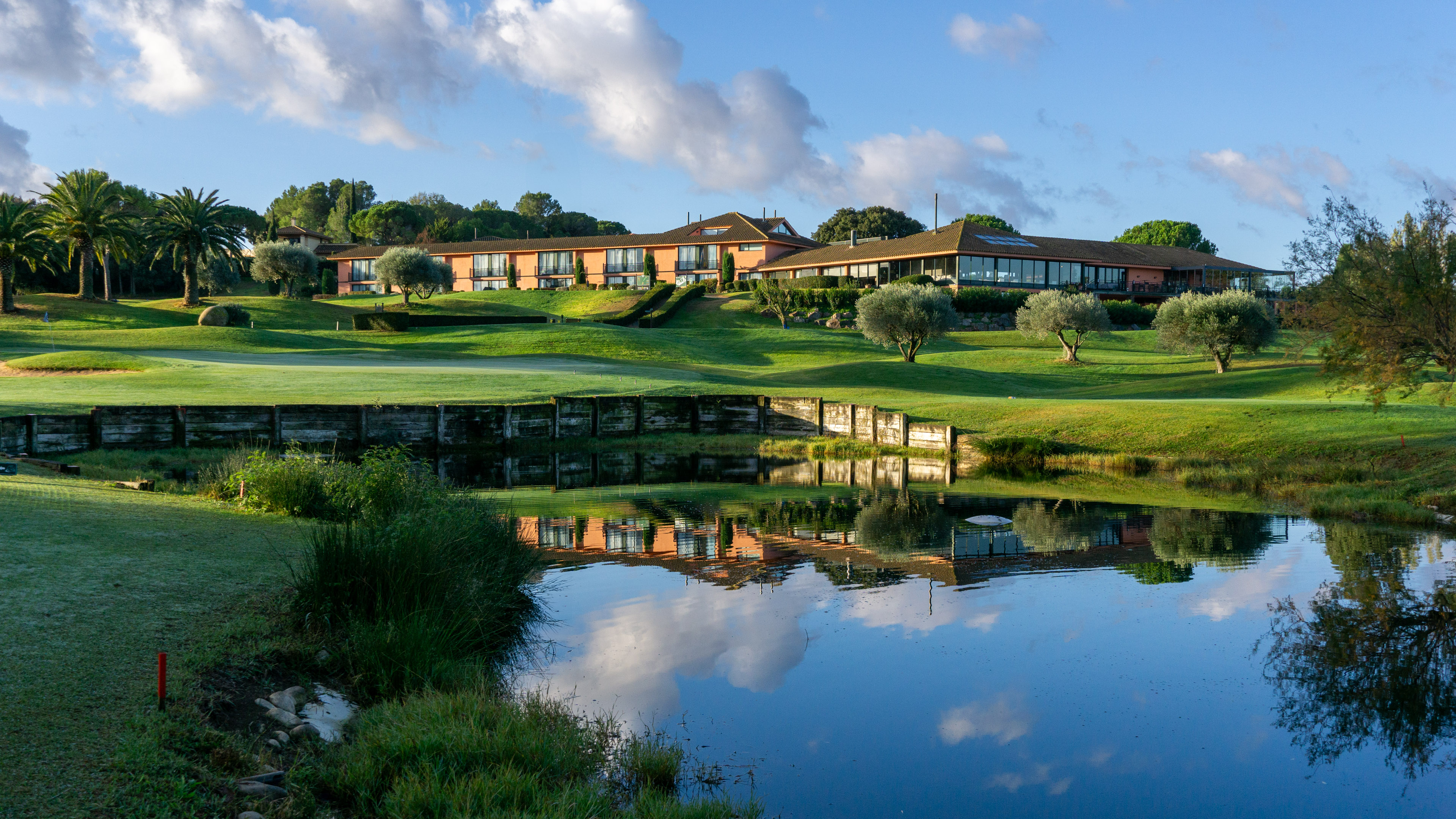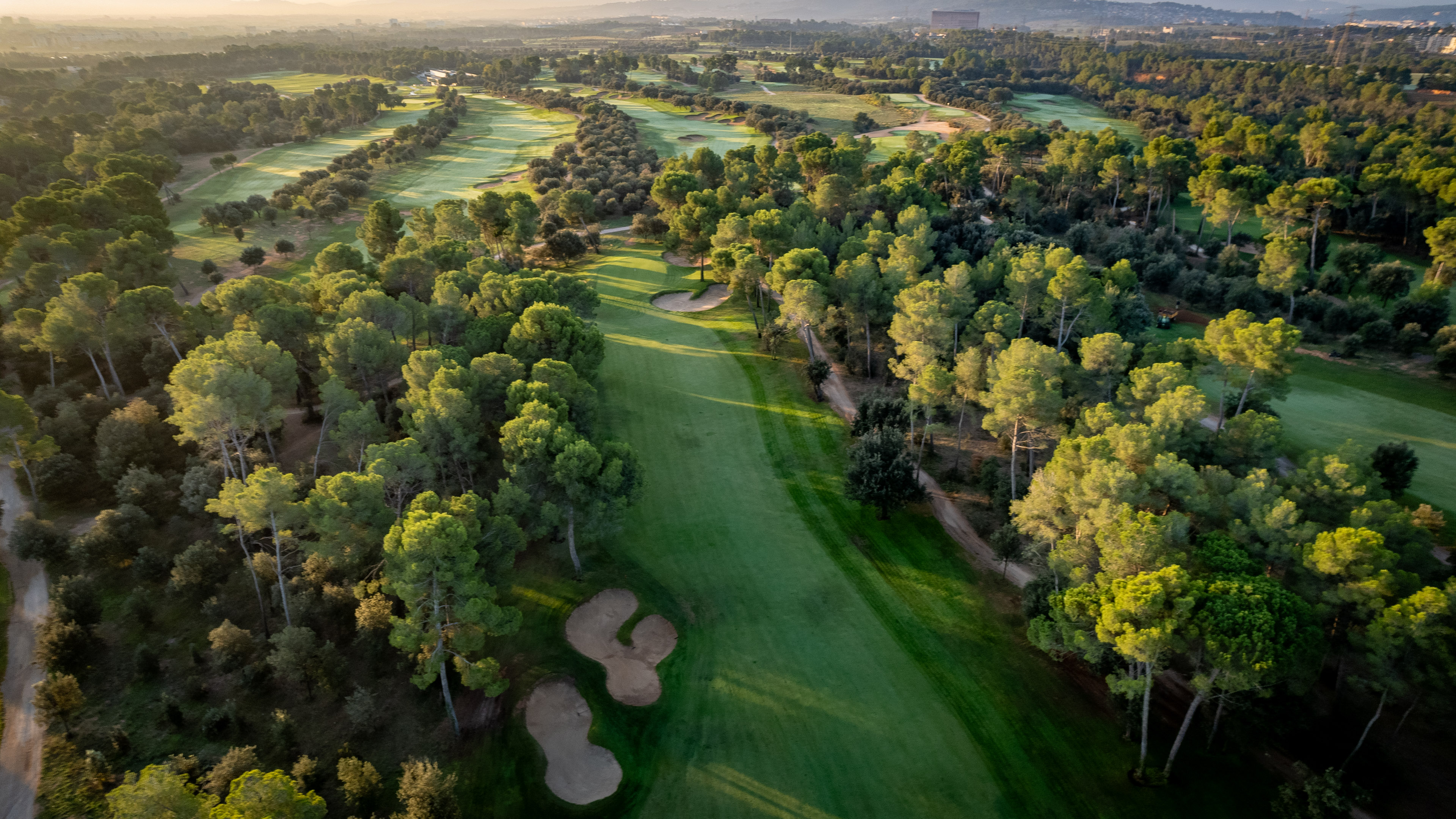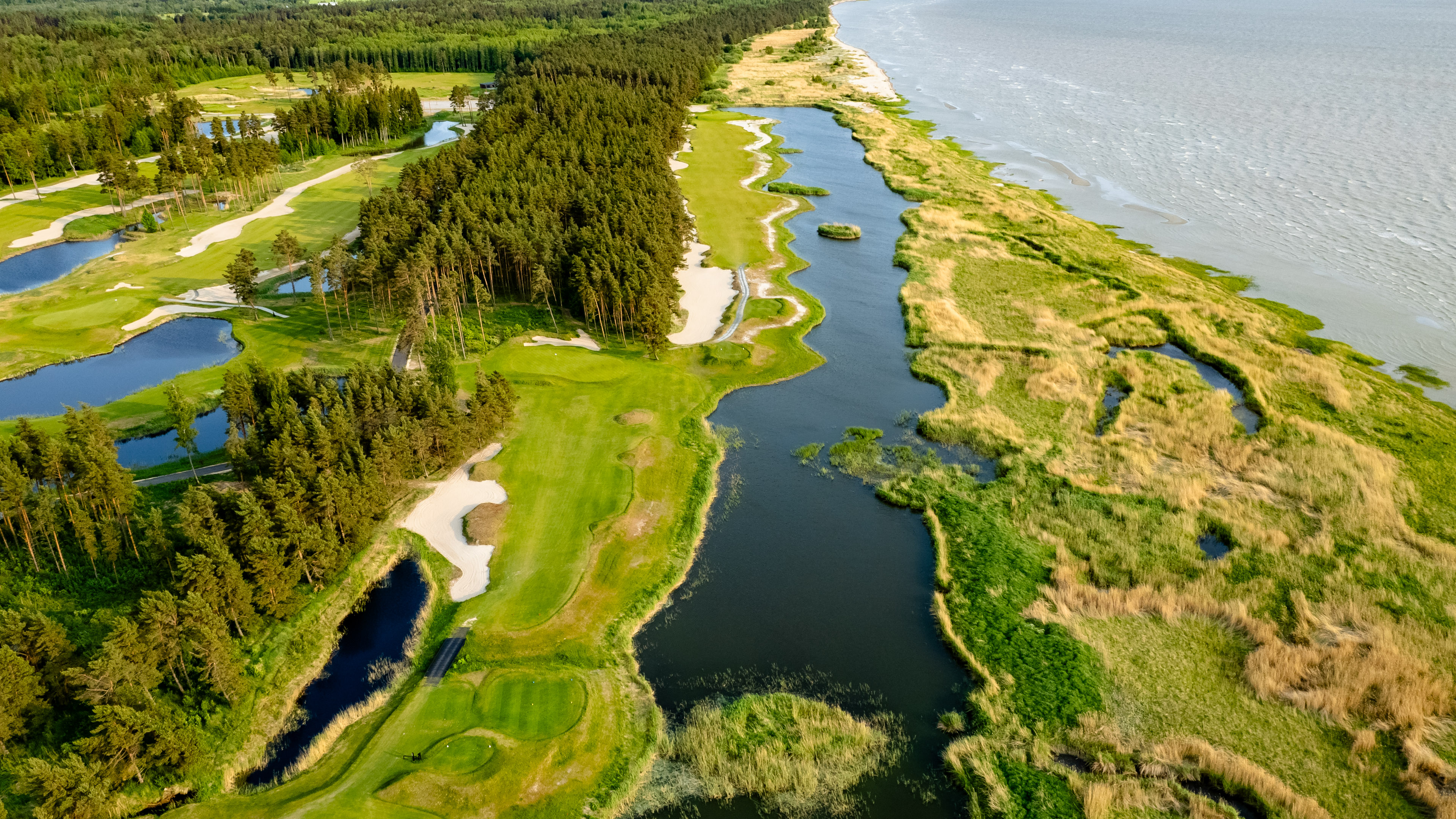Golf has been played in Tunisia since Carthage Golf Club opened in 1927, when the country was still a French colony. Today Tunisia is a small but vying Mediterranean golf destination with a dozen courses and a desire to give Euro-golfers their golf fix at any time of the year. Will Tunisia make a comeback on the golf tourism scene in the coming years?Text & photos: Kaia Means
There are a lot of things playing in favor of Tunisia as a golf destination. First, for a sunny and warm winter destination, it’s one of the closest in proximity to central and northern Europe. As they say: “location, location, location.” From Frankfurt it only takes 2 hours and 25 minutes to fly to Tunis, whereas flying from Frankfurt to Malaga on the Costa del Sol takes 2 hours and 55 minutes, and flying to Faro in Portugal takes 3 hours and 5 minutes. Not a lot of travelers realize this unless they study the world map and see how Tunisia, due south of Switzerland, juts up further north than its North African neighbors. In fact, Tunis is only 316 km from Palermo on Sicily, as the crow flies. No wonder Tunisia was an important part of the Roman Empire a couple of millennia ago.
Proximity is one thing. Cost is another. I’ve never met a golfer who wouldn’t appreciate a smaller bill at the end of the day. The cost of a golfing vacation in Tunisia should add up to a substantially lower total price than a similar trip to Spain or Portugal. The Tunisian dinar has dropped. Tunisian cuisine – a mix of French colonial heritage with spicy Arabic and Berber dishes – can at its best impress even the most seasoned golf trekkers. The local red wine (try Selian) can be surprisingly good. When food, drink, accommodation and green fees come at wallet-friendly levels, and when service is good (Tunisians are renowned for their friendliness and warm welcome) and things run smoothly, Tunisia has a lot going for it.
Of course, all things aren’t equal. Because even though Tunisia has a lot to offer, and especially to the budget-conscious, it has some hurdles to overcome. The main problem has been the cancellation of charter flights since the events in the aftermath of the Jasmine Revolution of 2011 and the attacks on foreign tourists in 2015. As with destinations such as Turkey and Egypt, the result has been a steep decline in tourism. Although attacks have occurred in recent years in many places in the world, including Paris, Brussels, London and Madrid, European cities have not seemed to be struck off the list of ‘places to go’ in the same way. It will be interesting to see how long it takes before the major charterers resume their once-frequent flights to Tunisia. Perhaps the 2015 Nobel Peace Prize, awarded to the Tunisian National Dialog Quartet, has helped shine a light on the political forces in the country that are working toward moderation, compromise and democratic institutions.
We all seem to be rooting for Tunisia’s nation-builders and for a stable democracy to emerge. But the question remains: what will bring the tourists back in the high numbers that Tunisians saw just a few years ago? In the meantime, all we can do is to relate our Tunisian experiences, where there is some good golf to be had, sunny skies to be enjoyed and a fascinating history and culture to be explored. Not to mention the ‘extras’ that are there for the more adventurous visitors (like venturing into the Saharan Desert).
Although a trip to Tunisia at the moment may involve a little bit of extra planning regarding flights, etc., it may appeal to the more independently-minded. The rack rate for two months of unlimited golf for two people, for example at Flamingo in Monastir, was about 900 euros last we checked. One thing to remember is that there’s always a deal to be made. In other words, if you’re looking for a place to stay for a week or 12 to ride out the winter, you should probably get directly in touch with one of the resorts and strike a deal that includes accommodation and perhaps meals. Some of the courses, for example Citrus Golf, have free shuttles that bring guests from affiliated hotels to the course.
Port El Kantaoui
We started off on an afternoon in February driving 90 minutes from Tunis Airport down to Port El Kantaoui, just north of Sousse, Tunisia’s third largest city. Port El Kantaoui is small, so that despite staying on the south side of the central marina, it was still only a 10-minute walk from our hotel, the well-appointed Hasdrubal Thalassa & Spa, to the clubhouse of El Kantaoui Golf on the north side.
There are two golf courses: the El Kantaoui Panorama Course and El Kantaoui Sea Course. The Sea Course (par 73, 6273 m) is the older of the two, having opened in 1980, designed by the prolific Californian Ronald Fream, of whom you will read more about further down. El Kantaoui was host to the Tunisian Open in 1982. In 2015 the Tunisian Open was reinstated at El Kantaoui in cooperation with the Alps Tour (one level under the Challenge Tour, the European Tour’s feeder), which Tunisia joined the same year. In May 2016 the tournament was won by Englishman Matt Wallace at El Kantaoui.
The Panorama (par 72, 6044 m) opened in the 1990s and although shorter is generally viewed as the better of the two as it has both more undulation, better views over the Mediterranean and it doles out a few tricky challenges. The setting includes many palms and age-old olive trees, along with some eucalyptus, date and pomegranate trees. Throw in a cactus here and there. The course meanders around a couple of man-made lakes. The first few holes are flat, as the course makes its way past adjacent housing. After crossing the road you get to the par three 6th, which is a picturesque hole where the green is tucked behind a little lake. The 7th goes up, and so does the 8th, featuring a steep and constricted approach with a couple of mean bunkers, so take enough club. On the 8th green you are on top of a rocky ridge where you get the best views of the port and the blue Mediterranean in the distance. This is the best part of the course. The back nine are played up on this plateau, with some interesting canyons cutting into the terrain. The 17th has a memorable tee shot from a raised tee toward the fairway that curves around the lake below, ending up at a green protected by a ditch at the front and water on the right.
Both the El Kantaoui courses are a bit rough around the edges in terms of course maintenance (bare patches here and there), but it will probably still be OK for most casual golfers who want to make sure their swings don’t rust during the winter while enjoying southern climes. In general for the trip, the greens seemed to be pretty good, whereas the areas surrounding the greens sometimes needed a little bit more TLC.
Fream’s Flamingo
In neighboring Monastir (25 minutes from Port El Kantaoui) they also have a golf course. Monastir is known by history buffs as the presumed location of the battle of Ruspina in 46 BC, where the forces of Julius Caesar fought those of the rebel Titus Labienus, and thousands of soldiers perished on both sides. Perhaps the battle raged more than 2000 years ago on what is now the Flamingo resort. Today, we can relive the feeling through our battles on the fairways, of perhaps a different and less violent nature.
Flamingo Golf is an 18-hole course, also by Ronald Fream, who designed several courses in Tunisia. It is part of the same ownership group as El Kantaoui. The first thing that meets you at the resort is a small but modern clubhouse, with a southern European architectural style and a fashionable interior design. The practice putting green, right next to the clubhouse, has great views over the coast, where the sandy “sebkha” (salty lakes) of Monastir dominate the panoramas.
The Flamingo course (par 72, 6402 m) has a varied coastal routing, up and down through and over mini-canyons. Some of the holes have a kind of safari feel to them, with rocky outcrops and greens surrounded by olive trees or steep slopes. It includes three holes that feature water and seven traversing cliffs. When it comes to course conditioning, the club has improved, but still needs a bit more work.
The Flamingo is set up in two distinct nines, with the first nine playing a little bit longer than the second. Both nines end up at the clubhouse perched at the top of the hill. In true traditional British style, the holes are named colorfully: the 5th is Bedouin, the last three on the front nine are Relaxation, Daring and Serenity (not sure if the names are really indicative of the feelings of the average golfer, though!) One of the most unusual holes is the 13th: Double Trouble. It’s the first time I’ve seen one hole with two different sets of tees, with different yardages listed for each tee color, depending on whether you choose the tees on the left or on the right (i.e. the yellows are listed alternatively at 341 and 349 m). The 14th is Dromedary – of course to a two-tiered raised green. All in all, a fun course – in fact, it is probably the most interesting course design we’ve played in Tunisia.
Yasmine Valley
Heading back northward, we make our way to Hammamet, Tunisia’s most well-known golf destination. There are three 18-hole courses and a couple of 9-hole courses in Hammamet, and if you add nearby El Kantaoui and Flamingo at Monastir, you can certainly make a week out playing a new course every day.
Yasmine Valley (par 71, 5924 m) opened in 1991, and was Hammamet’s first course, about a 10-minute shuttle drive from the closest hotels. It is another Ronald Fream design. The intent was that Yasmine would get a second shorter course designed by Jack Nicklaus Design – who were also going to redesign the championship course – but the plans have been put on the back burner indefinitely. Let’s hope this will come to fruition one day.
Again, the clubhouse is tastefully done, and the practice areas are plentiful. Taking out a few balls on the putting green right in front of the clubhouse, I realize that some of the slopes are pretty extreme. Putting uphill toward a hole that’s set in a slope, the ball passes the hole on the left, curves round behind the hole and rolls back down the hill toward me. Wtf. It is a harbinger of things to come, although none of the greens we see on the course at Yasmine Valley are quite as extreme as this practice green setup. Yasmine probably has the most difficult greens in the country.
The course is two loops of nine, with the clubhouse atop the hill in the middle. The course encircles a large practice area and a short academy course. The club is proud of its elevated and expansive tees, two small lakes and a stream, and dramatic bunkers. The first hole gets things going with a downhill tee shot toward water that looms on the right. The par five goes around the lake, then doglegs uphill. After a couple of par fours back and forth, we get to the memorable par three 4th. Here the green is so slanted, back to front, that it’s hard to find a fair hole location – even the shortest putts can demand an accurate read of the slope unless they’re straight uphill. Interestingly, this hole is slope index 18.
The 6th, which used to be an uphill par five, has been shortened to a par four of 343 m from the back. This was in order to accommodate space for the on-hold Nicklaus course. The tee for the par three 7th is up high, giving views over one of the most picturesque holes on the course.
Yasmine is another pretty course along the coast, with mature olive and beautiful eucalyptus trees, with some stunning views looking out over the white buildings of Hammamet and its beaches. The best view, in my opinion, is from the terrace, when you can look down at your gorgeously presented lunch and a cold pint of lager, looking up every once in awhile to take in the African sunset.
45 holes at Citrus
Immediately next to Yasmine Valley is Citrus Golf, probably the most complete golf resort in the country, and the only one to offer a 45-hole golf complex. Created around seven lakes in an expansive area with olive trees and forests, its two 18-hole courses are set in gently and pleasantly rolling terrain.
The two main courses are Les Oliviers (par 72, 6106 m) and La Forêt (par 72, 6066 m). Les Oliviers has generous fairways dotted with olive trees, which create definition to the holes, especially when they run parallel to each other. The front nine is pretty flat, but the fun really starts on the 10th. The last nine on Les Oliviers encircles the executive course, a tempting 9-holer (1221 m) – great for tuning up your game, especially since the greens are quite good. A special feature of the executive course is that two of the tees are placed in bunkers – you’re allowed to tee it up from the bunker, yes.
La Forêt is hillier, surrounded by a pine forest that can make for some tight holes, and includes a few blind shots and some water hazards. The bunkers are large and usually quite shallow. One of the most memorable holes on La Forêt is the short par four 8th, where the green would be drivable by a very big hitter (313 m from the back). The green is guarded by the kind of lake that always seems to lure macho guys to take off just a bit too much, leaving the safe players smirking.
All of the courses at Citrus are designed by the seemingly omnipresent Ronald Fream. His name is on six of the dozen 18-hole courses in Tunisia. Fream was originally hired by Robert Trent Jones in the 1960s, but only stayed four years before he set up his own company, Golfplan. Since then he has designed golf courses in 65 countries, with many successful projects in Asia. He has worked alongside other architects, most notably Australia’s Peter Thomson.
Everything at Citrus seems to work just that much more smoothly – the practice areas are well-planned and practical. The Strokesaver is a lifesaver. Citrus Golf shows a passionate attitude toward golf and golfers, even on a limited budget. You feel welcome the moment you step in the door. On the day we arrived, a full troupe of under-12 juniors had lessons in the short game area, devotedly attended to by the pro.
Citrus is probably the resort I would choose to stay at if I were to spend a long-stay in Tunisia during the winter in order to work on my golf game, as it has what you need: two good courses with good greens, plus an executive course for a relaxed practice pace (and short game drills). The nearby Sentido Phenicia hotel gives package deals for golf, and the shuttle runs from the hotel to the golf course regularly. This is all very practical. Not to mention the great clubhouse service and top notch Tunisian clubhouse restaurant. Kudos.
The Residence
The final golf course we played in Tunisia was The Residence in Gammarth, just 20 minutes’ drive from the capital city of Tunis. Opened in 2008, its’ the newest course in the country and Robert Trent Jones II’s only North African design. Built adjacent to a nature reserve, it has enough water to put out a forest fire. You’re literally making your way on a patch of land between the Mediterranean sea and a salt lake – so on the water-bound holes, no matter which way you mishit your ball, the result will be saline.
The feeling of sea salt and wind, with migrating birds bringing up the rear, is the best thing about this course. The design is probably more difficult than absolutely necessary for an emerging golf country such as Tunisia, that needs simple courses that encourage beginners to keep at it. The course (par 72) is 6285 m from the back, so obviously intended to present a big challenge to anyone who’s up for it. It’s a more manageable 5786 m from the yellows and 4809 m from the reds. Still no pushover. The first nine is encroached upon by some housing lining the fairways, like you find sometimes in southern Spain.
The best half is the back nine – but perhaps also the most difficult, with a few very long holes and many featuring many different paths toward a lost ball. After 18 holes, it feels great to relax in the ultra-modern clubhouse with a drink of choice.
Cool Carthage
Finally, we visited the historic Carthage Golf Club, where golf in Tunisia began in 1927. We took a little buggy trip around the short, old-fashioned course, which was renovated in 1991 by Yves Bureau. But there wasn’t time to play it. Instead we enjoyed the clubhouse. It actually blew my mind. It had the feel of a really cool bar, and it was full of people and a distinct trendy (but relaxed) buzz from the moment we entered. We sat down to have some lunch, and as the meal progressed the music got louder and louder, until we felt like we were in a night club – but it was still only 2 pm. People were talking, gesticulating, laughing, hugging – you really felt like this was THE place to be in town! If only more golf clubs were as relaxed, cool and packed as this! It really made me want to come back to Tunisia, if only to be part of this club for a full day – including a round of golf.
Links:
- www.elkantaouigolf.com
- www.golfflamingo.com
- www.golfcitrus.com
- www.cenizaro.com/theresidence/tunis/golf
- www.golfcarthage.com
Accommodation:
- El Kantaoui Hasdrubal Thalassa & Spa: www.hasdrubal-thalassa.com
- Sentido Phenicia Hammamet: www.sentidohotels.com
- The Regency Tunis: www.regencytunis.com/en

